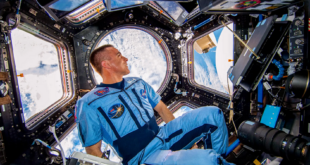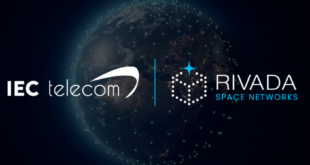by Ronald van der Breggen
A second-generation LEO has been in operation for years. Why are we only now launching our first generation?
 Recently I got an email with people referring to various LEO systems and they were classified into being either first or second or third generation. It was interesting because their definitions were different from mine. Of course it is silly to be surprised about that: The classification that I’ve come up with has never been published and apart from some speaking opportunities for LeoSat and one interview I did while consulting for KebNi, I haven’t even spoken about it. So maybe it is time to set the record straight and talk about technology generations in LEO.
Recently I got an email with people referring to various LEO systems and they were classified into being either first or second or third generation. It was interesting because their definitions were different from mine. Of course it is silly to be surprised about that: The classification that I’ve come up with has never been published and apart from some speaking opportunities for LeoSat and one interview I did while consulting for KebNi, I haven’t even spoken about it. So maybe it is time to set the record straight and talk about technology generations in LEO.
It actually is an interesting topic as it illustrates in yet another way, how our industry has its own unique way of going about things.
The Cellular base case
In mobile telephony we are reasonable familiar with the various technology generations and people have a common understanding of what they are: First generation was analog, the second was digital and SMS was introduced, with 3G we started to get some basic data services, which further increased with 4G and now allows for mission-critical applications to be run in 5G. That is 30 years of mobile telephony in a nutshell. Notice also that from a customer perspective the first generation started out with business users, then as the generations moved on, slowly the consumer market got included and now with 5G there’s a renewed effort to further develop the B2B market. In other words, the market started out targeting premium services for enterprise to create lift-off, it then created volume in the consumer market, albeit at the expense of some profit margins, but are now looking for ways to increase profitability as well as additional revenues through 5G.
Hold this thought as you’re reading on…
1st Generation LEO – Bent Pipe
The satellite industry is a fairly traditional industry. It is for that reason that when ambitious plans were made public to put satellites in a lower orbit to address some terrestrial data communication challenges, that its satellite design was very similar to that of geostationary (GEO) satellites. It largely meant that LEO satellites were bent-pipe: What goes up must come down, just like in GEO. This was true for Greg Wyler’s O3b in the 2007/2008 timeframe and later for OneWeb. For those that were at the DC satellite show in 2015, I’m sure you can remember Greg Wyler talking about his new project OneWeb and how his mushroom antenna and his bent pipe satellites at 1000km altitude would change the world, creating equal opportunities for all.
Starting with these two projects, our industry was tackling some of the data communication challenges that the terrestrial world was facing, in terms of reach and location, by deploying its conventional geostationary satellites – albeit smaller – in a lower orbit. Being in that low orbit is key in this context as it addresses latency, the all-important data communication metric, as well as the ability to use less radio spectrum to generate the same amount of Bits. The lower the orbit, the lower these numbers get – and that’s a good thing if you’re moving into data-communication.
2nd Generation LEO – Inter Satellite Links
Now that with this first generation of LEOs we are clearly moving away from video as the primary application for satellites and move into data communication, it begs one important question: is it fair to assume that a bent pipe architecture, successfully deployed in GEO for video, is also the optimal architecture for satellites in LEO deployed for data communication? Or put in a different way: Now that satellites are being used for data, should it’s architecture not mimic that of terrestrial infrastructure?
The answers to those questions seem to be obvious. Terrestrial data communication equipment is characterized by being interconnected and as such they are part of a network. They are the network. This is in sharp contrast with bent pipe satellites in low earth orbit. Here, 100s if not 1000s of satellites are flying around, oblivious to the whereabouts of other satellites and certainly not connected to any of them. They are all doing their own thing and unless in contact with a ground station, they are doing it completely unmonitored. To anyone that joins the satellite industry with a data communication background this is an architecture that is incredibly difficult to get your head around, because it has suboptimality (and potentially disaster) written all over it.
It is here were micro-waves and lasers are starting to be deployed to connect the satellites that are part of the same constellation. Think of it as the space equivalent of the (optical) cross-connect. Currently every LEO operator that started out with bent-pipe satellites is talking about lasers. Not doing so will eventually cut-off paths to funding, something all LEO operators still need a bunch off. They simply need to demonstrate to investors how certain earth-stations can be bypassed, or left out altogether, saving a ton of CAPEX, and how unconnected satellites hovering over the pacific can be reached and monitored after all.
3rd Generation LEO – Network in Space
A widespread misconception is that once you have satellites connected, you can operate the constellation as a network. People may start calling it a network, but that does not make it one. By taking a quick look at the OSI model, one can easily see that merely introducing a connection is only the first of many layers that need to be considered. Beyond that, what is the constellation used for? Public? Private? IoT? Content Delivery? And what about performance? Throughput, Scalability, Bottlenecks, Load balancing… All truly relevant design factors that go beyond merely introducing a laser on a satellite. And we have not even begun to talk about what network protocols to run, about on-board processing, security, authentication, forward and backward compatibility… the list goes on and on.
All these items are front and center on the agenda of all CIOs, who are the key decisionmakers in the data-domain that LEO constellations are now trying to enter. These CIOs may be impressed with laser connected satellites in space, but when it comes to finding alternative infrastructure next to their terrestrial investments, they are looking for a bit more than that.
Constellations that have all this figured out in function of a certain customer group or application, and that can clearly articulate how the constellation will seamlessly interoperate with its terrestrial equivalents, will find a clientele that is more than willing to spend a considerable amount of money on services they cannot find anywhere else.
Sleeping at the helm
With these three generations defined, one of the satellite companies, Iridium, stands out odd. This 2nd generation satellite constellation requires special attention as they already offered services using interconnected LEO satellites as early as 1998! Now, granted, these were no data services at the time, only satellite telephony, but with their newly replaced satellites – also interconnected and therefore also 2nd generation – they now most certainly do offer data services through CERTUS. It is interesting that they are doing that well before any of the 1st generation LEOs are even ready for service. This makes you wonder: Is Iridium really an outlier not fitting any bucket, or has the rest of the industry been sleeping at the helm and forfeited an opportunity to get in where Iridium left off? That is, not to go backwards from interconnected satellites to bent-pipe as they did.
Depending on where you come from you will answer that question differently. People that have a data communication background are very skeptical about these first generation LEOs and many of them argue that it should have been skipped altogether and the industry should have indeed used the Iridium architecture as a baseline instead. I’m certainly on the record for being in that category. People that have a more traditional satellite background look at this 1st generation LEOs much more favorably. Appreciating the complexity of satellites and how much money is required, seeing earlier projects fail, settling for straightforward technology serving the higher purpose of connecting the unconnected, seemed to make a lot of sense. In any case, whether you subscribe to that or not, we now need to stick with it, or else no service will be launched at all, and that will be bad all around.
Live and learn
Another peculiarity that stands out is when we compare the LEO generations with that of cellular. The 1st generation cellular telephony was aimed towards the top 5% of the market. Corporate executives with large budgets allowed for high prices and healthy margins. The mass market didn’t get targeted until a solid, corporate revenue stream with healthy margins was well in place. How different again in satellite. The first generations LEOs are all, without exception, completely focused on low ARPU consumer markets. None of that successful market skimming that has been working so well and has been so typical for cellular telephony. Sure, corporate customers are not denied service or anything, but one only has to take a look at the service positioning of SpaceX’ Starlink to know that this consumer focus is still very much alive and the prime focus.
The downside of this is that, similar to the cellular market when it started targeting the consumer market, it sends the market off in a downward price spiral. We know all too well that we are quite in the middle of that as we speak. Tom Choi’s latest announcement on CurvaNet and its new low pricepoints just seems to propel this trend into another nosedive, leaving zero wiggle room for the billions of dollars that have been already invested in other LEO constellations. If you are an investor in 1st generation LEOs you were probably already biting your nails because of the low ARPU, this continuous race to the bottom will make you bite of your fingers.
On a positive note: It is fairly safe to assume that second generation LEOs and certainly its 3rd generation will be much better suited for corporate customers and we’ll see a move towards these higher yield markets as a function of LEOs moving into new generations. Too bad we didn’t take notes from the cellular guys who started out with high yield markets right from the get-go, but, hey, you live and learn!
Or do we?

Ronald van der Breggen, Owner of Route206, has more than 20 years of experience in the telecom and satellite sectors. A native of the Netherlands, van der Breggen began his telecom career at Dutch Telecom incumbent KPN, rising to the position of VP IP Services. He then joined SES, one of the world’s leading satellite operators as Vice President Customer Account Management. From 2015 to 2019 he served as Chief Commercial Officer of LeoSat, where under his leadership the company secured $2 billion in pre-launch commitments. With Route206, Ronald continues to help companies with brilliant technology to achieve commercial success through his decades of experience, structured approach and large industry network. Ronald holds a Bachelor’s degree in Business Administration from Nijenrode University as well as a Masters in Business Telecommunications from the Technical University of Delft, both in the Netherlands.
This article was originally published on LinkedIn. You can read the original here.





